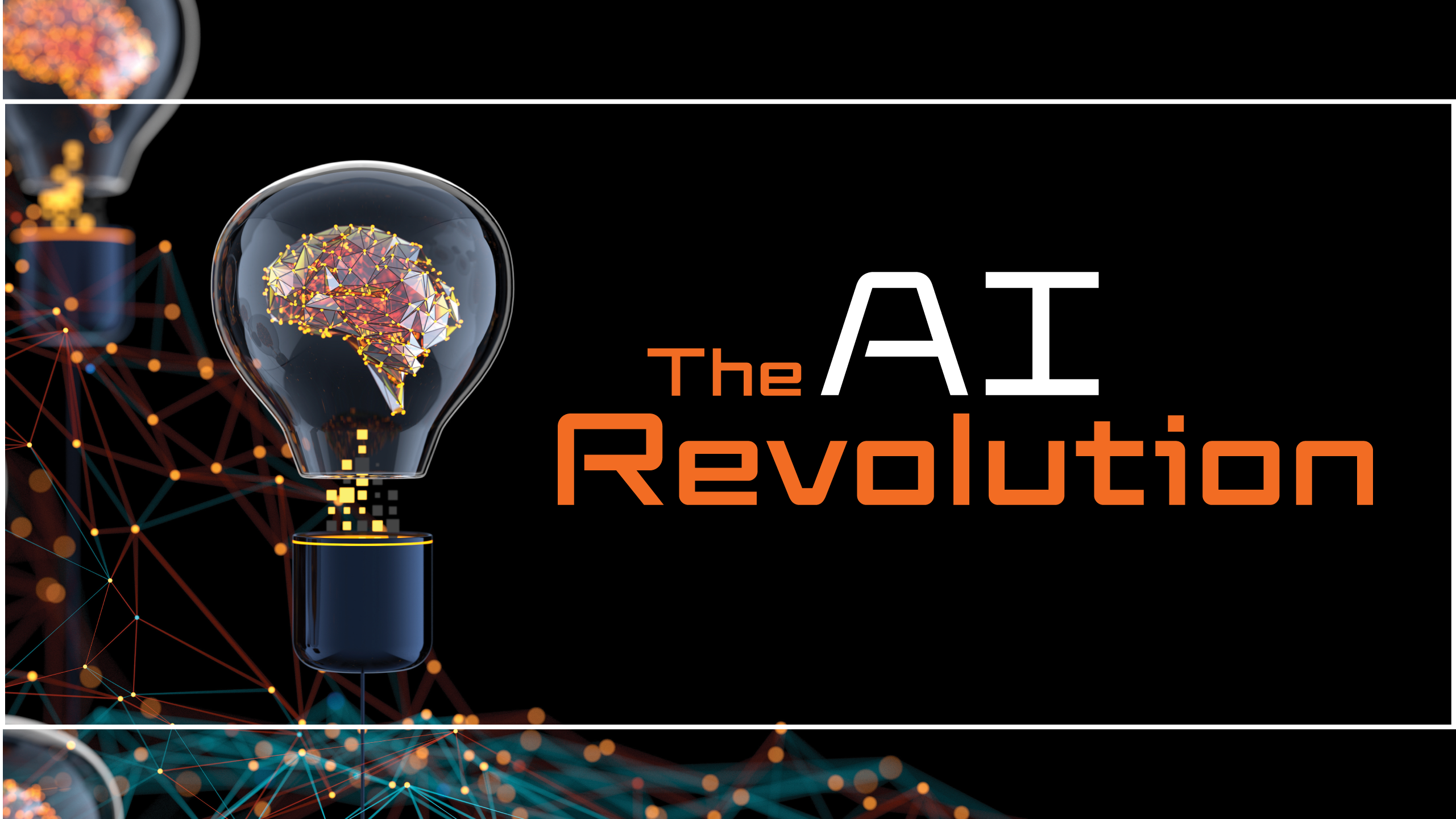The AI Revolution

How the University uses this transformational technology across multiple disciplines
By Tricia Schwennesen and Sam Boykin
Artificial Intelligence, once deemed to belong solely in the world of computer science, is finding its way across many disciplines. Texas A&M University-San Antonio is embracing this emerging and transformational technology, ushering in what promises to be a new era of research and higher education.
“The University recognizes that generative artificial intelligence is reshaping education, research and the workforce,” said Dr. Mohamed Abdelrahman, provost and senior vice president for academic affairs. “AI is not a replacement for critical thinking or foundational knowledge but a tool that, when used responsibly, enhances student learning, faculty innovation and institutional effectiveness.”
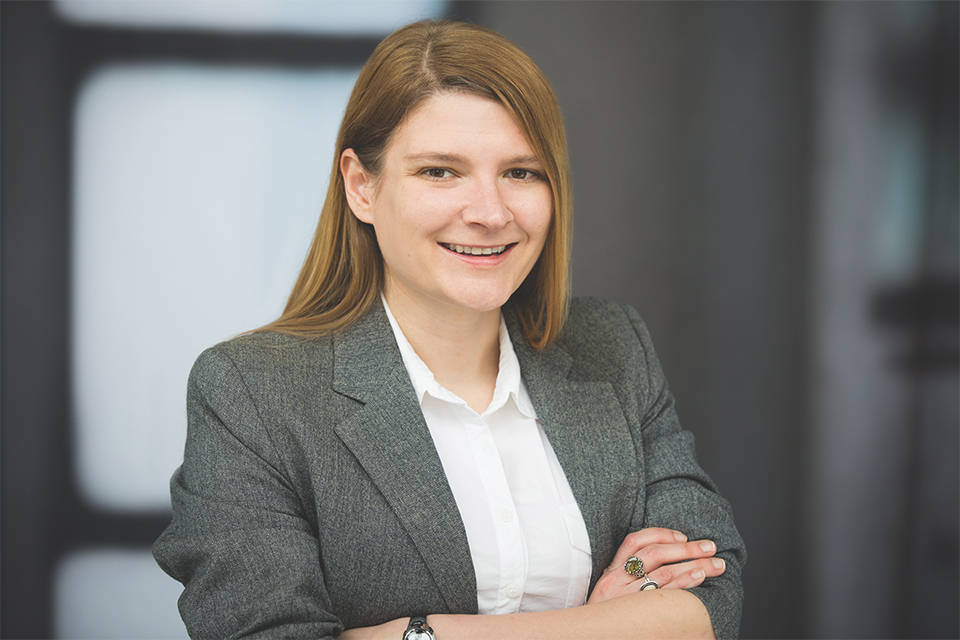 As A&M-San Antonio takes the necessary steps to responsibly incorporate AI into its academics and research, the University last year named Dr. Ashley Teufel, assistant professor of biology, as Provost Faculty Fellow for Generative AI. She’s charged with driving the integration of AI across various academic and administrative spheres, enhancing educational practices and elevating student success.
As A&M-San Antonio takes the necessary steps to responsibly incorporate AI into its academics and research, the University last year named Dr. Ashley Teufel, assistant professor of biology, as Provost Faculty Fellow for Generative AI. She’s charged with driving the integration of AI across various academic and administrative spheres, enhancing educational practices and elevating student success.
“One of the exciting things about the boom in AI is that all these projects you’d typically see come out of computer science are now everywhere, from all departments,” said Teufel.
Students in one of Teufel’s biology classes are using AI to identify different animal species. As part of the project, motion-detecting cameras are stationed around the University’s wooded acreage and snap photos when something moves nearby. Students sift through the photos using AI, which identifies the different species.
Teufel said AI streamlines the process, cutting down on the time students spend sorting photographs. However, it’s not infallible—yet. A human still must double-check the accuracy of results. As AI advances, the hope is that the model will improve and become even more efficient.
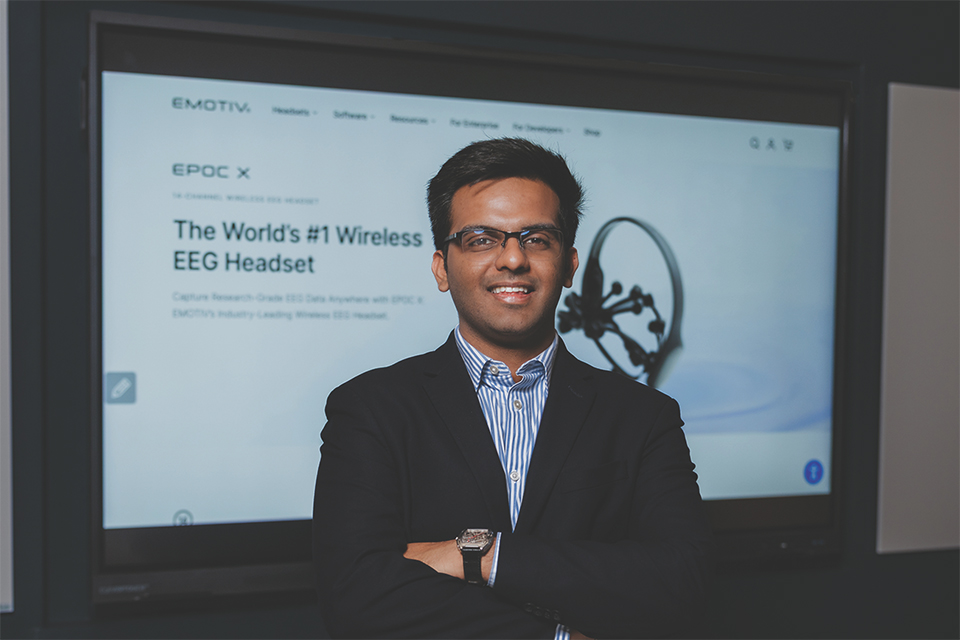 In the College of Business, Dr. Vipul Garg, assistant professor of supply chain management, is also incorporating AI into his research.
In the College of Business, Dr. Vipul Garg, assistant professor of supply chain management, is also incorporating AI into his research.
He recently was awarded a grant from the University’s Office of Research and Health Sciences to purchase electroencephalogram headsets that use special sensors to measure brain activity and eye movement.
Garg is using the high-tech devices for a project designed to improve the performance and safety of forklift operators in South San Antonio. The headsets use AI-enabled software to manage and analyze brain activity. He hopes to examine the “cognitive load” of forklift operators, which is essentially the mental effort required to process information. The initiative could bridge gaps in operator training and safety standards in warehouses and other high-stakes, labor-intensive work settings where workers are often under pressure to meet daily quotas.
“That can create a lot of havoc inside the driver's mind,” Garg said. “I’m looking at how we can improve the stress and retention rate of employees within warehouse settings using the cognitive load data. Ultimately, managers can use the information to help prevent injuries and accidents and avoid safety violations. The technology can be applied to many different industries. There are endless possibilities.”
 Dr. Amir Fekrazad, an associate professor in the Department of Accounting and Finance, is also exploring the possibilities of AI-powered initiatives. He has built an online tool dubbed Maptimum that combines AI’s problem-solving skills with specific datasets, including information like population, income levels, school performance and crime figures.
Dr. Amir Fekrazad, an associate professor in the Department of Accounting and Finance, is also exploring the possibilities of AI-powered initiatives. He has built an online tool dubbed Maptimum that combines AI’s problem-solving skills with specific datasets, including information like population, income levels, school performance and crime figures.
Fekrazad explains users can ask Maptimum’s AI specific questions, like where is the best place in San Antonio to raise kids or start a business.
“The AI digs into your request, picks out the key factors, and matches them to the data,” he said. “It creates filters and a scoring system on the fly, then ranks the top locations. You get the results on an interactive map, ready to explore.”
Fekrazad stresses the technology has broad uses. A social worker, for example, could use it to pinpoint the most vulnerable neighborhoods in a city — areas with high poverty, low health care access and aging populations — to focus their efforts. Or a company might ask Maptimum to find areas with young families and rising incomes to help identify the best market to launch a new toy line.
“The tool doesn’t just spit out answers; it shows you the ‘why’ behind them,” Fekrazad said. “What makes this stand out is the balance. AI handles the thinking, figuring out what you need and how to measure it, while the data provides the facts. Together, they deliver answers that are both smart and grounded.”
Preparing for a new era
One of A&M-San Antonio’s earlier forays into AI occurred in late 2023 when the University began work on a new AI program designed to enhance its education and research capabilities while strengthening the local workforce.
With the support of a $400,000 National Science Foundation grant, the University launched “Jag-AI,” an initiative designed to expand the University’s AI infrastructure, with a focus on improving health care, quality of life and national defense. Jag-AI is also helping advance careers in AI and assisting in developing curricula and training for faculty and researchers.
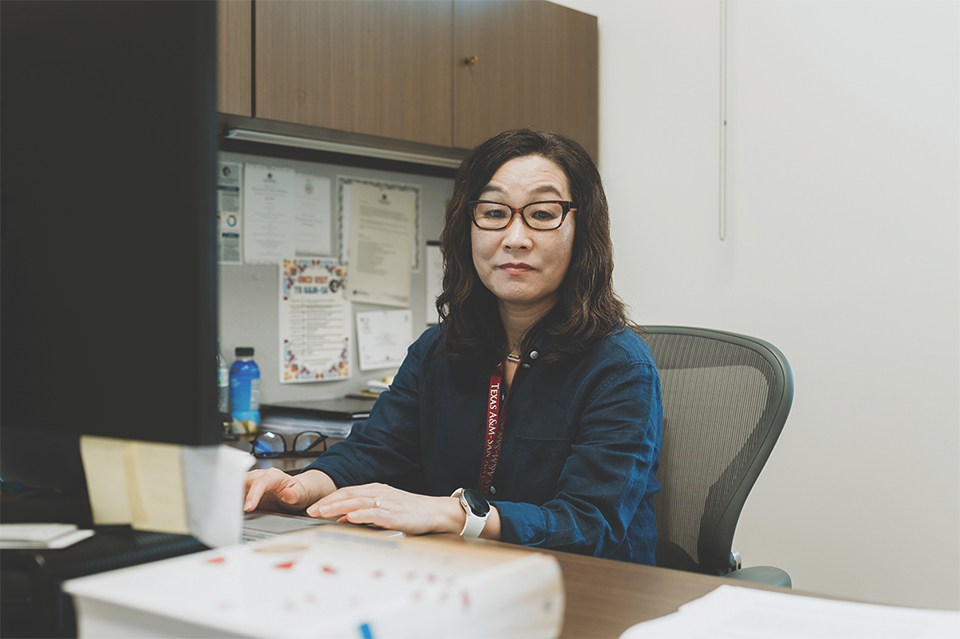 Dr. Jeong Yang, associate professor of computer science and cybersecurity, is helping spearhead the project. She stressed that Jag-AI will foster collaborations with industry and government to benefit economically disadvantaged students and help accelerate education-workforce development.
Dr. Jeong Yang, associate professor of computer science and cybersecurity, is helping spearhead the project. She stressed that Jag-AI will foster collaborations with industry and government to benefit economically disadvantaged students and help accelerate education-workforce development.
The University in the fall of 2024 rolled out two Jag-AI certificate programs, one for undergraduates and one for graduate students. Both credentials enable students to learn, use and develop AI systems within different academic disciplines.
“We are getting great interest from undergraduate and graduate students and are in full swing,” said Yang, adding that a proposal will be submitted this fall to offer a minor in AI.
In addition, the University recently launched Jag-AI training workshops for faculty, researchers, staff and graduate students. The workshops provide unique opportunities to incorporate AI technologies, tools and principles into research, teaching practices and professional development. Moreover, the workshops promote collaborative multidisciplinary research in a wide array of fields, from health, biology and psychology to cybersecurity, criminology, economics and finance.
“AI will make a huge impact in education and research in all fields,” said Yang. “The University is preparing for this new era, including reshaping our teaching methodologies and learning approaches to equip students for this new AI world. Our ability to adapt and apply AI in research and education needs to keep pace with evolving AI technologies and systems so we’re not controlled by AI but can effectively integrate and use it.”
Navigating an educational crossroads
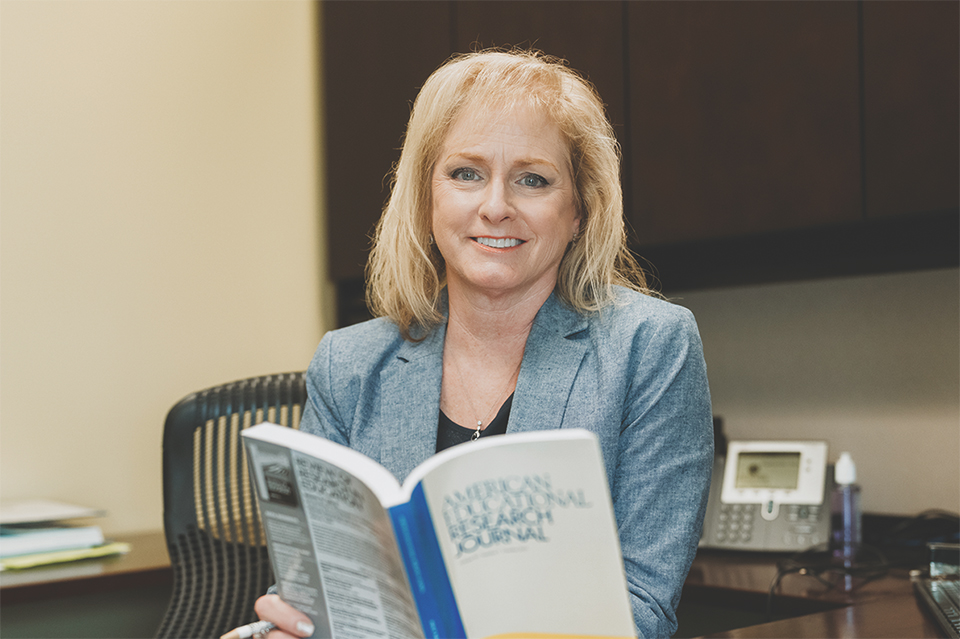 As the University continues to incorporate AI into its research initiatives and educational offerings, Dr. Elisabeth M. Krimbill, an associate professor in the Department of Educator and Leadership Preparation, is looking into the legal implications of AI misuse by students and the impact on schools.
As the University continues to incorporate AI into its research initiatives and educational offerings, Dr. Elisabeth M. Krimbill, an associate professor in the Department of Educator and Leadership Preparation, is looking into the legal implications of AI misuse by students and the impact on schools.
“I am interested in the disciplinary consequences when a student uses AI to create images that result in a significant disruption to the learning environment along the lines of cyberbullying and cyberharassment,” said Krimbill, who was named chair of the College of Education AI Task Force last summer.
When it comes to issues like AI and plagiarism, Krimbill believes it’s important to use such instances as a coaching moment rather than a cause to implement punitive measures.
“The learning happens through the coaching, not the grade,” she said. “It’s a ‘point of need’ lesson. We [teachers] fail students if we don’t coach them.”
Krimbill also notes the ways AI can enhance the learning experience and is incorporating AI into her classroom and research. She employs AI to analyze and improve students’ work using a provided rubric and comparing AI’s output to a student’s personal work. In addition, she’s exploring how AI can support education law and legal literacy, using AI to help research and find connections between legal cases.
“I think we will see greater opportunities for personalized learning, enhanced student support, and scientific collaboration,” Krimbill said. “AI will help us transform and improve teaching, learning, research and administration.”
Teufel, the University’s provost faculty fellow for generative AI, is helping the University with this transformation. She worked with other faculty members to establish an A&M-San Antonio AI value statement, which emphasizes the University’s ethical use of the technology and its dedication to fostering innovation, learning experiences and equitable access. She also helped spearhead the University’s core principles around AI, which include research excellence, educational enrichment, ethical leadership and responsibility, and lifelong learning and adaptability.
Abdelrahman said these tenets emphasize how the University balances AI’s potential with the need for students to build their knowledge base, while faculty have the autonomy and support to determine how AI is used in their courses.
“As AI continues to evolve, we are committed to thoughtful, ethical integration that empowers students and faculty alike,” said Abdelrahman. “By embracing AI while maintaining academic rigor, we position A&M-San Antonio as a leader in AI-enhanced education, ensuring our graduates remain competitive, adaptable and ready for the future.”

